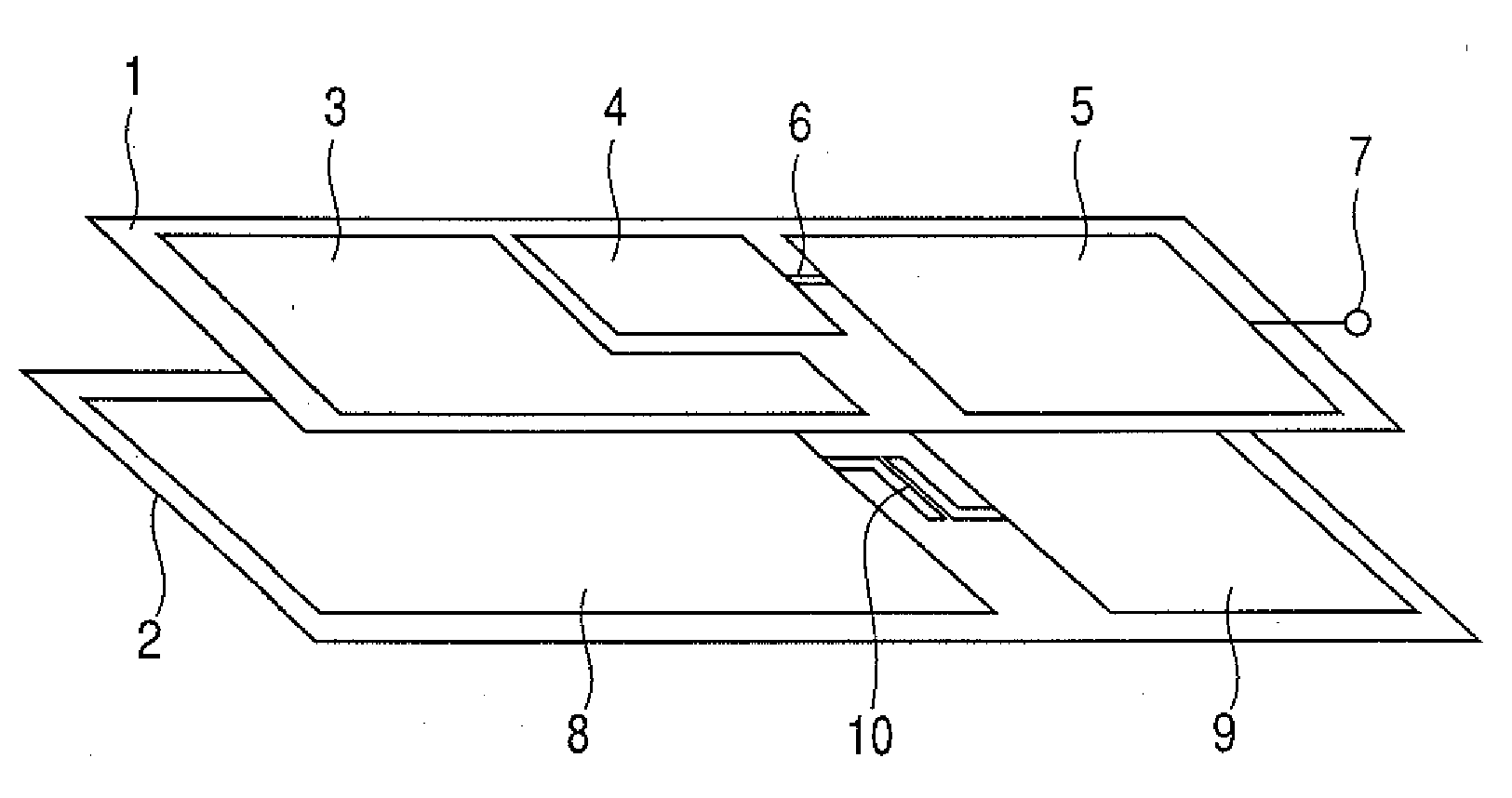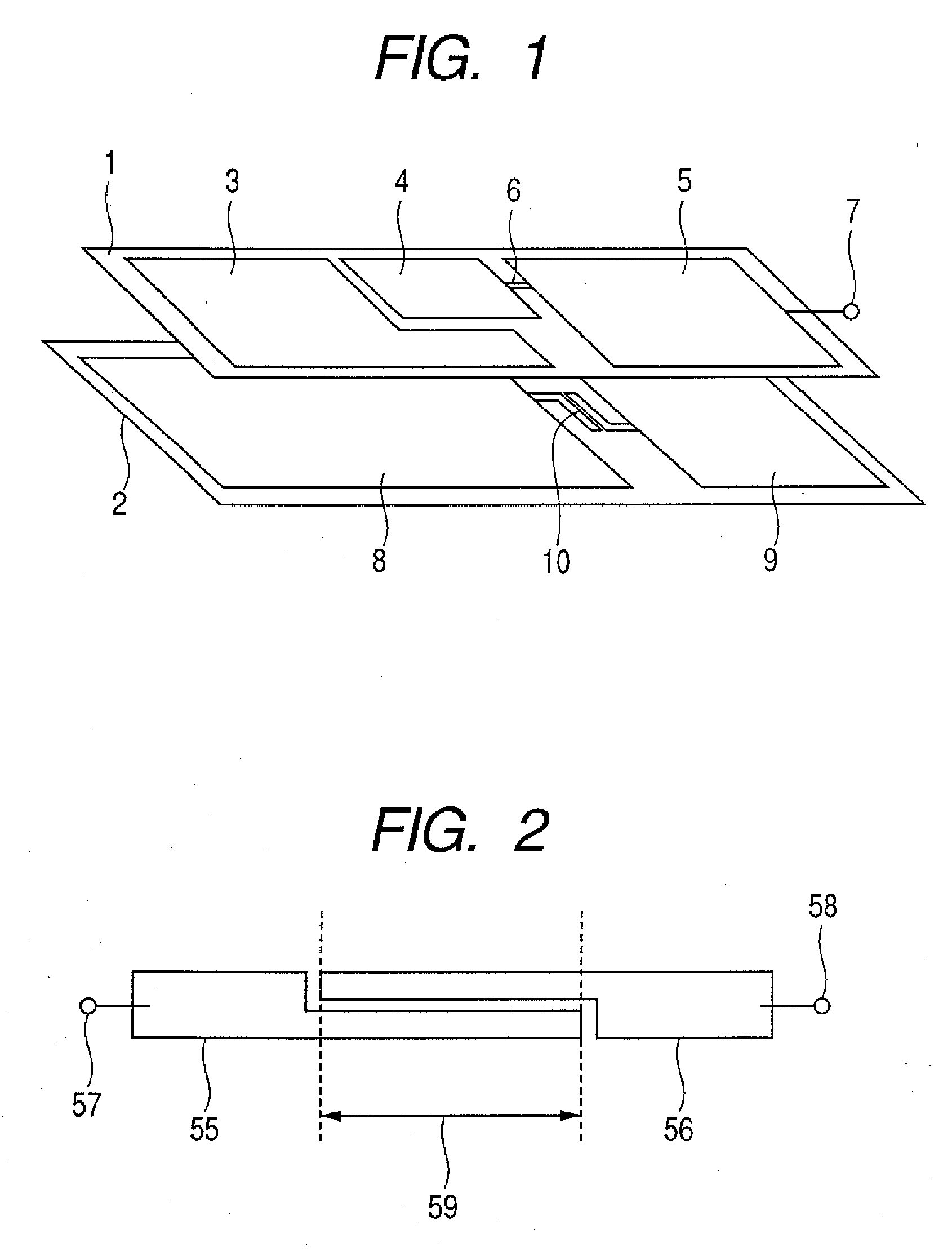Printed wiring board and electronic equipment
a wiring board and electronic equipment technology, applied in the direction of insulated conductors, cables, high-frequency circuit adaptations, etc., can solve the problems of spurious noise, transmission of spurious noise, and reception of spurious noise outside the desired frequency band, so as to reduce the influence of noise signals, suppress radiation noise, and maintain the quality of signals transmitted
- Summary
- Abstract
- Description
- Claims
- Application Information
AI Technical Summary
Benefits of technology
Problems solved by technology
Method used
Image
Examples
first embodiment
[0036]FIG. 1 is a schematic diagram for describing a structure of a printed wiring board, according to the present invention, of a digital camera having a built-in radio portion. A signal plane 1 has two blocks including a baseband block and a high-frequency block formed thereon. The baseband block includes a baseband signal processing portion 3 and a modulation / demodulation processing portion 4 which are electrically connected to each other. The high-frequency block includes a power amplifier 5. The modulation / demodulation processing portion 4 and the power amplifier 5 are connected to each other through a transmission line 6 which is an interface.
[0037]The baseband signal processing portion 3 has functions of executing digital signal processing on image information obtained with a CCD camera or the like, storing the image information, and outputting the image information. The baseband signal processing portion 3 generally performs operation and processing in synchronization with a...
second embodiment
[0051]FIG. 7 illustrates a second Embodiment of the present invention. This embodiment illustrates a device for receiving an image taken by a digital camera or a digital video and transmitted by radio, and displaying or printing the image.
[0052]A printed wiring board according to this embodiment is provided with a signal plane 11 and a ground plane 12 for forming a circuit on both sides thereof. The signal plane 11 includes circuit function blocks and the ground plane 12 includes grounds corresponding to the blocks of the signal plane 11. A radio transmission signal input from a receiving antenna terminal 18 is amplified by a low-noise amplifier 16, and subjected to frequency conversion to have an intermediate frequency at the frequency converting portion 15. At this time, the frequency converting portion 15 is supplied with local signals by a local oscillation circuit 17 for frequency conversion, and arbitrarily selects frequencies of the local signal, to thereby select radio frequ...
PUM
 Login to View More
Login to View More Abstract
Description
Claims
Application Information
 Login to View More
Login to View More - R&D
- Intellectual Property
- Life Sciences
- Materials
- Tech Scout
- Unparalleled Data Quality
- Higher Quality Content
- 60% Fewer Hallucinations
Browse by: Latest US Patents, China's latest patents, Technical Efficacy Thesaurus, Application Domain, Technology Topic, Popular Technical Reports.
© 2025 PatSnap. All rights reserved.Legal|Privacy policy|Modern Slavery Act Transparency Statement|Sitemap|About US| Contact US: help@patsnap.com



